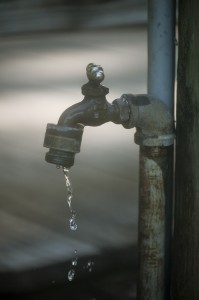Our favorite guest blogger and green guru Gus Stewart is offering up another great column chocked full of information about taking care of your lawn in a responsible way.
7 Eco-Friendly Tips for Taking Care of Your Yard

© Jill Heinerth
We all want to take better care of our environment. One of the best ways we can care for our planet is to limit the amount of precious resources we use each year, including water. If you have a lawn or garden, however, it can be tricky to conserve water while caring for your plants. Luckily, there are a few practical ways you can reduce your water usage while keeping your lawn luscious:
Work Your Soil: The first step in re-working your lawn is to make sure the soil is prepped. Proper soil preparation allow plants to root deeply and water to absorb more efficiently. Grab some good garden glovesand a few tools, then follow some easy stepsto get your dirt ready. Loose soil, remove weeds and then rake dirt back into place. Make sure your soil is packed down firmly before you begin adding any new seeds or plants.
Choose Water Wise Plants: If you want to conserve water, and still enjoy your lawn, you need to choose the right plants. Some breeds of grass require less water than others but still look beautiful. There are also accent plants and flowers that can help you cut down on water waste. To be sure you get the right plants and placement, think about hiring a landscaper. Most homeowners spend from $1,766 to $3,227 nationally to hire landscaping help.
Water Wisely and Only When Needed: To really conserve water, you’ll want to avoid some common watering mistakes. Even when it’s dry outside, your lawn doesn’t need to be watered everyday. Cutting back on your watering is one of the simplest ways to save water. When you do water, make sure you do it in the morning or evening hours. If you water during daylight hours, especially during the warmer summer months that water will evaporate before it even hits the dirt.
Use Rainwater to Your Advantage: The best source for garden water tends to come from above: rain. There are several ways to use rainfall to help your lawn and garden flourish. You can use rain barrels to collect water for irrigation. A rain garden is another way to keep rainwater from going to waste. Within a weekend, you can set one of these eco-friendly gardens up to add appeal to your yard.
Maintain Irrigation Equipment: One of the most practical ways to prevent water waste is to properly maintain the source of your water. Check all sections of your irrigation system for leaks and damage on a regular basis. Hoses tend to weaken and crack in dry and hot weather, so go over them a couple of times each season. Inspect spigots and valves for drips as well. Even a small leak can lead to a loss of thousands of gallons of water each year. Calculate your leak losses here and then take steps to make repairs.
Mow Well and Grow Longer: Mowing your grass helps keep your lawn looking fresh, so take care of this chore on a regular basis. Keep grass longer to make it more tolerant of dry weather and less frequent waterings. Sharpen mower blades to keep grass blades healthy. To help make the most of whatever water your lawn gets, leave those grass clippings in place rather than tossing them away.
Pick Up a Rain Gauge: When storms do roll in, it can still be tricky to figure out when you still need to water. Take the guesswork out of your lawn care by getting a rain gauge. This way to you can see exactly how many inches have fallen and how much water your lawn actually needs. Check the gauge often to be sure to know how much water your lawn needs. You can sustain most species of grass on about an inch of water each week.
Americans waste so much water each year. Avoid contributing to the shortage by takings steps to make your lawn more water-efficient. Recycle rainwater, choose the right plants and take care of all parts of your garden. With these simple changes, you can make your outdoor spaces more eco-friendly and give yourself peace of mind.
